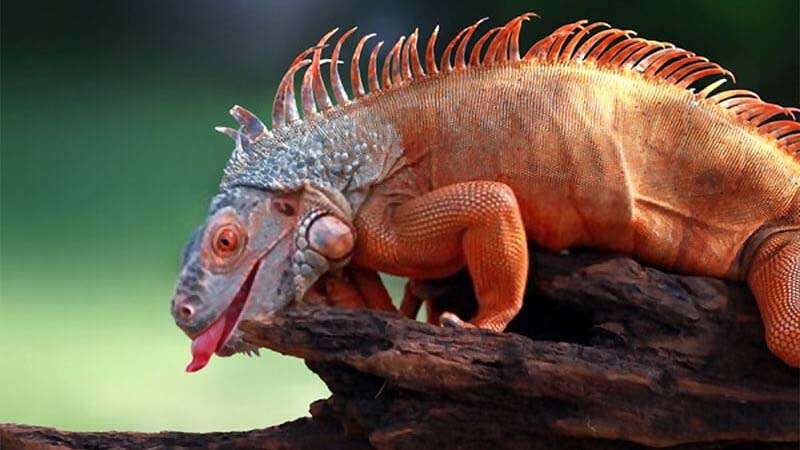
Description:
Scientific name: Iguana sp.
Life span: 12-15 years
Large reptiles, red iguanas can reach lengths of over six feet. Red iguanas have a brilliant green belly and a crimson body. Iguanas have spikes going down their backs and uneven skin. Africa’s southern and eastern regions are home to red iguanas.
Native Region/Habitat
South America is home to a species of lizard known as the red iguana. Typically, tropical rainforests are where you can find them.
Behavior:
These iguanas are gregarious creatures that typically reside in groups in their native habitat. Males often display territorial behavior and engage in conflict over the best basking locations. The green and red iguana are relatively simple to maintain in captivity, but they do need some recreation of their original habitat.
Care As a pet/In captivity:

Choosing a Proper Terrarium: A sizable cage is necessary to provide for an iguana in its full adult size. Iguanas can be kept as juveniles in a regular terrarium tank, but as adults, they need a cage that is roughly six feet tall, six feet wide, and four feet deep. Glass containers are inadequate for this use because a large enclosure made entirely of glass would be difficult to maintain. Although some pre-made iguana cages are available at pet stores and online, custom-built enclosures made from a variety of wood, plexiglass, and wire are a typical option.
Setting up the Terrarium: Maintaining the right temperature and lighting levels is a vital element of taking care of your iguana. The lizard will benefit from being housed in a cage that receives natural light, if at all feasible. Reptile bulbs that may be purchased at pet stores should be used in addition to natural light. Since iguanas like warm, tropical climes, it is vital to provide heating lamps. A tank should have a hot side and a cool side so the iguana may adjust the temperature as necessary. For it to be pleasant, the daytime temperature must be just a little bit higher than 90 degrees.
Providing Proper Diet: Greens, fruits, and vegetables must be a part of an iguana’s diet. As they are herbivores, they won’t need to eat insects or other sources of protein that are frequently found in the diets of some other species of pet lizards. A diet for iguanas should mostly consist of chopped greens. In addition to adding vegetables, like broccoli, you may also add more greens. Fruits can be included in the diet as a treat, but they shouldn’t make up a significant amount of it. Also, you must offer the iguana fresh water every day that is chlorine-free. You might add some fruits or vegetables to the water bowl to encourage your pet to drink. To avoid forgetting anything, it is a good idea to establish a daily schedule for feeding and replacing the iguana’s water.
Table





